Navy SEAL fitness is a comprehensive program designed to build elite-level strength, endurance, and mental toughness. It focuses on functional training, swimming, and calisthenics, preparing individuals for the rigorous demands of special operations. The Complete Guide to Navy SEAL Fitness by Stewart Smith offers detailed workouts, nutrition advice, and strategies for overcoming physical and mental challenges, making it an essential resource for aspiring SEALs and fitness enthusiasts alike.
1.1 Historical Background of Navy SEAL Training
The historical background of Navy SEAL training traces back to World War II, when the U;S. Navy established the Naval Combat Demolition Unit (NCDU) and Underwater Demolition Teams (UDTs). These early units conducted reconnaissance, demolition, and amphibious assaults. In the 1960s, the Navy consolidated these teams into the Sea, Air, and Land (SEAL) program, creating an elite force for counterinsurgency and unconventional warfare. The rigorous training regimen, including the infamous Hell Week, was designed to test physical and mental limits, ensuring operatives could endure extreme conditions. This legacy of resilience and adaptability forms the foundation of modern Navy SEAL fitness standards.
1.2 Importance of Fitness in Navy SEAL Operations
Fitness is the cornerstone of Navy SEAL operations, enabling operatives to perform under extreme conditions. SEALs must possess endurance, strength, and agility to execute missions involving long-distance swims, carrying heavy gear, and navigating challenging terrains. Physical fitness also enhances mental toughness, allowing SEALs to withstand stress, fatigue, and pain during high-stakes missions. Moreover, teamwork and coordination are built on a foundation of individual physical readiness. The ability to recover quickly and maintain peak performance ensures operational success and survival in hostile environments. Thus, fitness is not just a requirement but a critical enabler of Navy SEAL effectiveness and mission accomplishment.
Overview of the Navy SEAL Fitness Program
The Navy SEAL fitness program is a structured, comprehensive system designed to build strength, endurance, and agility. It focuses on functional training, conditioning, and teamwork, ensuring peak performance while emphasizing safety and effectiveness.
2.1 Key Components of the Training
The Navy SEAL fitness program emphasizes strength, endurance, agility, and mental resilience. It incorporates rigorous exercises like push-ups, pull-ups, and running, alongside swimming and obstacle courses. The training is progressive, increasing intensity to build peak physical condition. Mental toughness is cultivated through challenges that simulate real-world missions, fostering teamwork and discipline. Proper form and technique are stressed to prevent injuries, ensuring long-term sustainability. The program is holistic, blending physical and mental development to prepare individuals for the demands of special operations; This balanced approach ensures SEALs are versatile, adaptable, and ready for any mission scenario.
2.2 Phases of the Navy SEAL Fitness Program
The Navy SEAL fitness program is divided into distinct phases, each targeting specific goals. The initial phase focuses on building foundational strength and endurance. The second phase intensifies workouts, emphasizing power and speed. The third phase concentrates on functional training and mission-specific skills. Finally, the program enters a tapering phase to ensure peak performance during final assessments. Each phase is designed to progressively challenge participants, ensuring they meet the rigorous standards required for SEAL operations. This structured approach helps prevent overtraining and ensures a balanced development of physical and mental capabilities.
Physical Screening Test (PST) Requirements
The PST evaluates a candidate’s physical readiness for Navy SEAL training through standardized tests, including swimming, push-ups, sit-ups, pull-ups, and running. It assesses endurance, strength, and agility.
3.1 Minimum PST Standards for Navy SEAL Candidates
The Physical Screening Test (PST) requires candidates to meet specific minimum standards to qualify for Navy SEAL training. These include performing at least 42 push-ups in 2 minutes, 50 sit-ups in 2 minutes, and 6 pull-ups. Candidates must also complete a 500-yard swim in under 12 minutes and a 1.5-mile run in under 10:30 minutes. These standards assess cardiovascular endurance, muscular strength, and overall physical preparedness. Meeting these benchmarks is essential for progressing in the program and demonstrates the baseline fitness level required for the rigors of SEAL training.
3.2 Tips for Passing the PST
To excel in the Physical Screening Test (PST), focus on building a structured workout plan tailored to each event. Prioritize swim and run training to enhance cardiovascular endurance. Strengthen core muscles through exercises like planks and Russian twists to improve push-up and sit-up performance. Incorporate pull-up practice with assistive bands or weighted exercises to build upper body strength. Maintain consistency, gradually increasing intensity to avoid injury. Practice proper form to maximize efficiency. Use visualization techniques to stay mentally prepared. Ensure adequate hydration, nutrition, and rest to support recovery. Simulate test conditions during workouts to build familiarity and mental resilience. Seek mentorship from experienced candidates for personalized guidance.
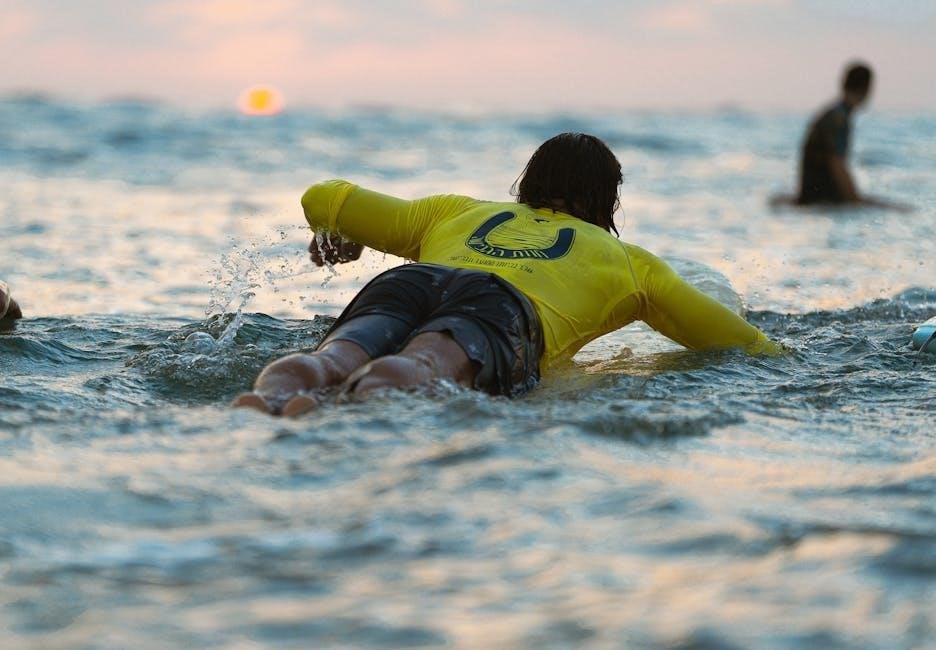
Weekly Workout Routine
A well-structured Navy SEAL fitness plan balances strength, endurance, and functional training. Each day focuses on specific skills, progressing from foundational to advanced exercises, ensuring consistency and gradual intensity increases to achieve peak physical conditioning.
4.1 Day 1: Warm-Up and Stretching
A Navy SEAL fitness regimen begins with a dynamic warm-up to prepare the body for intense training. This includes light cardio such as jogging or jumping jacks, followed by stretching to improve flexibility and reduce injury risk. Focus on major muscle groups like hamstrings, quads, and shoulders. Incorporate mobility exercises for joints to enhance range of motion. Proper warm-up ensures optimal performance and prevents muscle strain. SEAL candidates often perform yoga or Pilates to improve balance and core stability. This foundational day sets the tone for the week’s rigorous workouts.
4.2 Day 2: Strength and Power Training
Day 2 focuses on building muscular strength and explosive power, essential for Navy SEAL operations. Workouts include weightlifting, bodyweight exercises, and plyometrics; Exercises like push-ups, pull-ups, squats, and bench presses are common. Power exercises such as box jumps, medicine ball throws, and kettlebell swings improve explosiveness. SEALs often perform compound movements to target multiple muscle groups. Rep ranges vary between 3-8 for strength and higher reps for endurance. Progressive overload is key to continuous improvement. Proper form and safety are emphasized to prevent injuries. This day lays the foundation for the physical demands of SEAL missions.
4.3 Day 3: Cardiovascular Endurance
Day 3 emphasizes improving cardiovascular endurance through high-intensity aerobic exercises; Workouts include running, swimming, cycling, or rowing for extended durations. SEALs often perform interval training, alternating between sprints and steady-state cardio to boost heart rate efficiency. Long-distance runs and rucksacks with weighted packs are also common. These exercises simulate mission demands, enhancing stamina and mental fortitude. Proper pacing and hydration are stressed to avoid burnout. Consistent cardiovascular training ensures SEALs can endure prolonged missions without fatigue, making it a cornerstone of their fitness regimen.
4.4 Day 4: Functional Training and Obstacle Course
Day 4 focuses on functional training and obstacle course drills to build agility, strength, and coordination. SEALs tackle challenging courses with ropes, walls, and balance beams, simulating real-world mission obstacles. Functional exercises like kettlebell swings, sandbag carries, and box jumps enhance practical strength. Team-based activities foster camaraderie and problem-solving under stress. The obstacle course tests mental toughness, requiring candidates to push past physical limits. These drills improve adaptability, ensuring SEALs can overcome unpredictable challenges in the field. Mastery of these skills is essential for mission readiness and survival.
4.5 Day 5: Swimming and Underwater Skills
Day 5 emphasizes swimming and underwater skills, essential for Navy SEAL operations. Candidates perform endurance swims, treading water, and underwater navigation to build stamina and confidence. Fins are used to enhance speed and leg strength. Drills include diving, retrieving objects, and escaping underwater obstacles. These exercises simulate real-world mission scenarios, such as aquatic insertions and extractions. Mental toughness is tested as candidates learn to remain calm and focused underwater. Mastering these skills is critical for SEALs to operate effectively in maritime environments and execute missions with precision and safety.
4.6 Day 6: Active Recovery
Day 6 focuses on active recovery to promote muscle repair and prevent overtraining. Activities include light swimming, yoga, or stretching to improve flexibility and reduce muscle soreness. Candidates may also engage in foam rolling or self-myofascial release to enhance recovery. This day is crucial for maintaining long-term physical performance and mental resilience. By allowing the body to heal, SEAL candidates can return to intense training with renewed energy and focus. Active recovery ensures sustainability in the demanding Navy SEAL fitness program, balancing rest with gentle movement to optimize overall readiness.
4.7 Day 7: Rest and Mental Preparation
Day 7 emphasizes complete rest and mental preparation to recharge for the upcoming week. Candidates engage in light activities like reading, meditation, or visualization to strengthen mental resilience. This day allows the body to fully recover while sharpening focus and mindset. Mental preparation techniques, such as goal setting and positive affirmation, are essential for building the discipline required for Navy SEAL training. Rest is crucial for physical and mental rejuvenation, ensuring candidates are ready to tackle the next phase of their fitness journey with maximum intensity and determination.
Nutrition and Recovery
Proper nutrition and recovery are vital for Navy SEALs. A balanced diet rich in protein, complex carbs, and healthy fats fuels performance. Hydration and sleep are emphasized, while techniques like foam rolling and ice baths aid in muscle recovery, ensuring optimal physical and mental readiness.
5.1 Recommended Daily Nutrient Intake
Navy SEALs require a balanced diet to support intense training. Daily intake should include 1.2-2.0 grams of protein per kilogram of body weight from lean sources like chicken, fish, and eggs. Complex carbohydrates, such as whole grains and vegetables, provide sustained energy, while healthy fats from nuts, avocados, and olive oil aid in recovery. Fiber intake should be adequate to maintain digestive health. Staying hydrated is crucial, with a goal of 3-4 liters of water daily. Meal timing is also important, with balanced meals spaced throughout the day to fuel performance and recovery.
5.2 Role of Hydration in Physical Performance
Hydration is critical for Navy SEALs, as water makes up 60% of body weight and is essential for bodily functions. Even mild dehydration can impair physical performance, leading to fatigue, reduced focus, and muscle cramps. SEALs are advised to drink 3-4 liters of water daily, adjusting for sweat loss during intense training. Proper hydration supports endurance, strength, and recovery. Monitoring urine color (pale yellow indicates proper hydration) and consuming electrolytes during prolonged exercises can prevent imbalances. Staying hydrated is a cornerstone of maintaining peak physical and mental performance, ensuring readiness for demanding missions and training scenarios.

5.3 Recovery Techniques for Optimal Performance
Recovery is vital for Navy SEALs to maintain peak performance. Techniques include foam rolling to relieve muscle tension, ice baths to reduce inflammation, and stretching to improve flexibility. Yoga and mobility exercises enhance recovery while preventing injuries. Compression gear, like sleeves, can aid blood flow and reduce soreness. Active recovery, such as light swimming or cycling, promotes circulation without overexertion. Adequate sleep (7-9 hours) is essential for muscle repair and mental rejuvenation. Additionally, nutrition plays a role, with anti-inflammatory foods and protein-rich meals supporting recovery. These methods ensure SEALs can withstand the rigors of training and operations.
Mental Toughness and Discipline
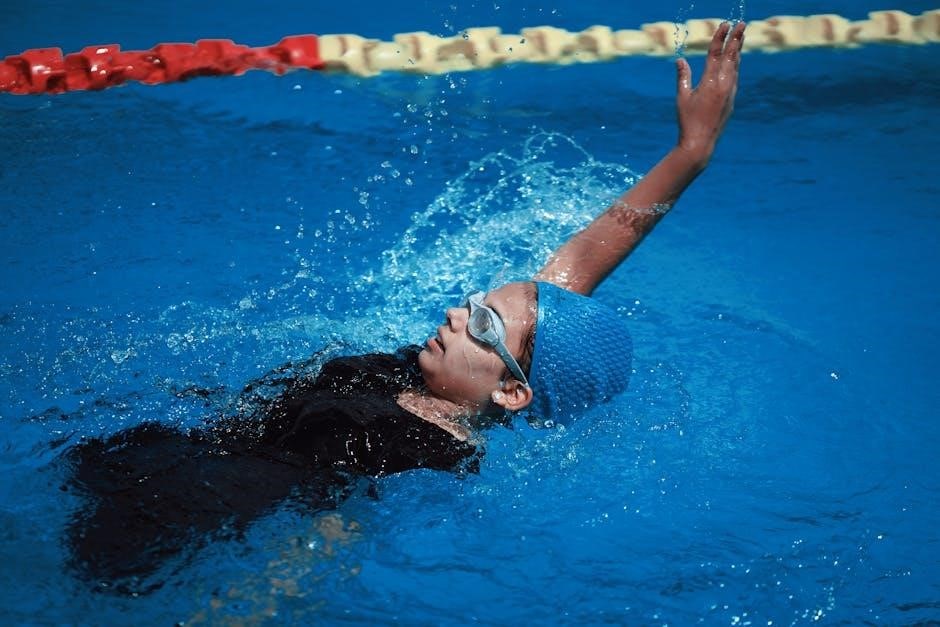
Mental toughness and discipline are cornerstone Navy SEAL traits, fostering resilience and focus. Emotional control and training adherence enable operatives to overcome challenges and succeed in missions.
6.1 Building Mental Resilience
Mental resilience is cultivated through exposure to stress and adversity. SEALs learn to reframe challenges as opportunities for growth, using techniques like visualization and positive self-talk. Emotional regulation is honed to maintain focus under pressure. Goal-setting and mindfulness practices help build confidence and adaptability. Resilience training emphasizes embracing discomfort and persisting through hardship, a mindset critical for overcoming obstacles in both training and real-world missions. This mental fortitude ensures SEALs remain composed and decisive, even in high-stakes environments, making it a cornerstone of their operational success.
6.2 Overcoming Fear and Pain
Overcoming fear and pain requires mental discipline and strategic techniques. SEALs learn to reframe fear as a natural response, focusing on actionable steps rather than paralysis. Pain tolerance is developed through exposure to discomfort, teaching the mind to prioritize mission objectives over physical distress. Techniques like controlled breathing, visualization, and compartmentalization help maintain focus. Understanding the purpose behind the pain enhances motivation, fostering resilience. This mental fortitude allows SEALs to push through extreme challenges, embodying the mantra of perseverance in the face of adversity.
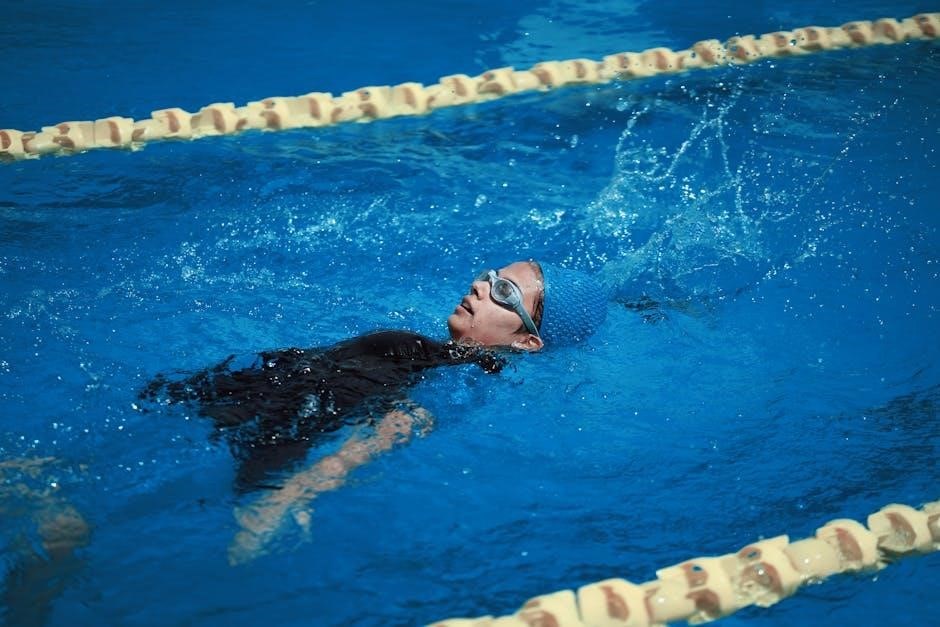
Injury Prevention and Safety
Injury prevention is crucial in Navy SEAL training, emphasizing proper techniques, equipment, and medical screenings. Safety protocols ensure risks are minimized, protecting trainees from avoidable harm.
7.1 Common Injuries in Navy SEAL Training
Navy SEAL training often leads to overuse injuries due to its intense demands. Musculoskeletal stress fractures, particularly in the lower limbs, are common from repetitive running and high-impact activities. Shoulder injuries, such as tendinitis and rotator cuff strains, frequently occur due to swimming and upper body exercises. Tendon and ligament sprains in the knees and ankles are prevalent from obstacle courses and endurance runs. Shin splints and stress fractures in the lower legs also arise from extensive running on various terrains, especially in heavy boots. These injuries highlight the physical toll of SEAL training and the need for careful management to prevent long-term damage.
7.2 Safety Protocols During Workouts
Safety protocols in Navy SEAL workouts are critical to prevent injuries and ensure optimal performance. Proper warm-up routines and dynamic stretching are mandatory to prepare muscles for intense activity. Instructors closely monitor form and technique during exercises to reduce injury risks. Hydration and nutrition are emphasized to maintain energy levels and prevent dehydration. Workouts are conducted in safe environments, with emergency response plans in place. Trainees are also taught to recognize early signs of fatigue or strain to avoid overexertion. Regular medical check-ups and recovery sessions are incorporated to maintain overall health and readiness for the demands of training.
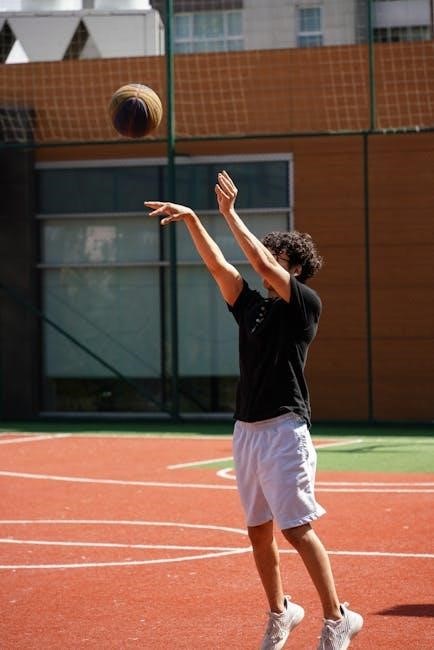
Periodization of Training
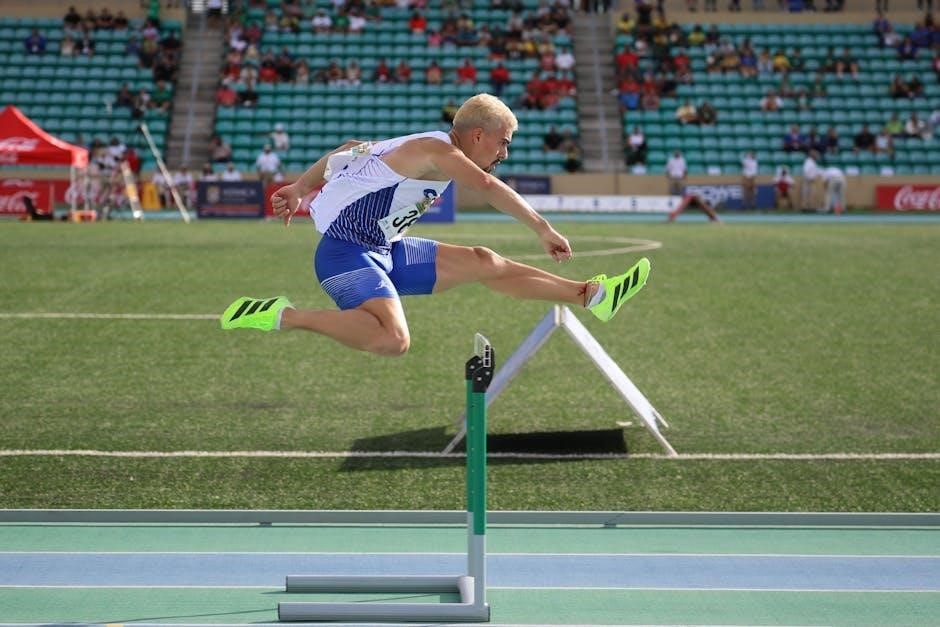
Periodization structures training into specific cycles, balancing intensity and recovery to optimize performance. It prevents overtraining and enhances adaptability, ensuring peak readiness for challenges like BUD/S. Proper planning is key.
8.1 Benefits of Periodized Training
Periodized training offers numerous benefits, including injury prevention, enhanced recovery, and improved performance. It allows for structured cycles of intensity and rest, maximizing physical adaptation. This approach reduces overtraining risks and ensures consistent progress. Additionally, it builds mental resilience by varying routines, preventing boredom and maintaining motivation. For Navy SEAL candidates, periodization ensures peak readiness for BUD/S and real-world missions. It also allows for targeted skill development, such as strength or endurance, aligning with specific operational demands. A well-planned cycle promotes long-term sustainability, enabling individuals to maintain elite fitness levels throughout their careers.
8.2 Sample 12-Week Training Cycle
A sample 12-week Navy SEAL training cycle is divided into phases: foundational conditioning, strength development, endurance building, and mission-specific preparation. Weeks 1-4 focus on building a baseline fitness level through swimming, running, and calisthenics. Weeks 5-8 emphasize strength training with weights and functional exercises. Weeks 9-10 shift to high-intensity endurance workouts, including obstacle courses and long-distance swims. Weeks 11-12 involve simulated mission scenarios, testing mental and physical limits. This structured approach ensures progressive overload, injury prevention, and peak performance. Recovery weeks are integrated to avoid burnout, making the cycle sustainable and effective for aspiring SEALs.

Real-Life Applications of Navy SEAL Fitness
Navy SEAL fitness prepares operatives for real-world missions, ensuring they can handle extreme conditions, perform precise operations, and maintain peak readiness in high-stress environments.
9.1 Preparing for BUD/S Training
Preparing for BUD/S requires a well-rounded fitness regimen that mirrors the challenges of Navy SEAL training. Focus on building strength, endurance, and agility through exercises like push-ups, pull-ups, and squats. Incorporate cardiovascular training such as running and swimming to enhance stamina. Functional training, including obstacle courses, is essential for real-world application. Mental preparation is equally critical; practice visualization and goal-setting to build resilience. Ensure proper nutrition and recovery to fuel your body. A structured workout plan that simulates BUD/S conditions will help you acclimate to the demands of the program and improve your chances of success.
9.2 Maintaining Fitness Post-Training
Maintaining fitness after completing BUD/S requires a disciplined approach to prevent regression. Incorporate a balanced routine that includes strength training, cardio, and flexibility exercises to sustain overall physical fitness. Focus on proper nutrition and recovery to support muscle health. Mental discipline remains crucial; practice mindfulness and set achievable goals. Engage in activities that challenge both body and mind, such as adventure races or martial arts. Building a support network with fellow veterans or fitness enthusiasts can help maintain motivation. Consistency is key to ensuring long-term fitness and readiness for future challenges.

Additional Resources and Guides
Explore official Navy SEAL fitness guides, including training manuals and e-books. Visit NavySEALs.com for authentic resources. Join online forums like Navy SEAL Subreddit for community support and tips;
- Download the official Navy SEAL Fitness Guide from reliable sources.
- Follow veteran-authored blogs for real-world advice.
These resources provide comprehensive insights and practical strategies for achieving and maintaining elite fitness levels.
10.1 Recommended Reading Materials
Enhance your knowledge with reputable Navy SEAL fitness resources. The official Navy SEAL Fitness Guide provides comprehensive training strategies. The Navy SEAL Workout by Stew Smith offers practical routines. Navy SEAL Training: The Complete Guide details BUD/S preparation. Additionally, Can’t Hurt Me by David Goggins shares mental toughness insights. These materials are available as PDFs or e-books on platforms like Amazon or Google Books. Official Navy SEAL websites also offer free downloadable guides. These resources ensure a well-rounded approach to achieving elite fitness levels.
10.2 Online Communities and Forums

Engage with online communities to connect with experienced individuals and gain insights. Reddit’s r/NavySEALs offers valuable discussions and resources. Facebook groups like Navy SEAL Fitness Community provide support and advice. Websites such as SEALgrinderPT share training tips and PDF guides. These platforms allow aspiring candidates to ask questions, share progress, and learn from veterans. Many communities offer free downloadable resources, training plans, and reviews of fitness programs. Participating in these forums fosters accountability and motivation, helping you stay on track with your Navy SEAL fitness journey.
Achieving Navy SEAL fitness is a challenging yet rewarding journey requiring discipline, resilience, and hard work. Embrace the process, stay committed, and transform your life forever.
11.1 Final Thoughts on Achieving Navy SEAL Fitness
Achieving Navy SEAL fitness is a transformative journey that demands mental and physical discipline. It requires perseverance, resilience, and a relentless pursuit of excellence. By integrating strength, endurance, and mental toughness into your routine, you’ll unlock your full potential. Remember, consistency is key, and every challenge is an opportunity to grow stronger. Embrace the grind, stay focused, and trust the process. Navy SEAL fitness is not just a physical journey but a mindset that will empower you to overcome any obstacle in life. Push your limits, and you’ll discover what you’re truly capable of achieving.
11.2 Encouragement for Aspiring Candidates
Embarking on the Navy SEAL fitness journey is a courageous step toward self-discovery and excellence. Remember, every challenge is a testament to your resilience and determination. Surround yourself with like-minded individuals who share your commitment to greatness. Celebrate small victories along the way, as they fuel your momentum. Stay disciplined, embrace discomfort, and trust the process. The path is tough, but the reward of becoming a Navy SEAL is unparalleled. Belief in yourself, your training, and your team will carry you through even the darkest moments. You are capable of more than you imagine—stay relentless and never give up on your dream.
